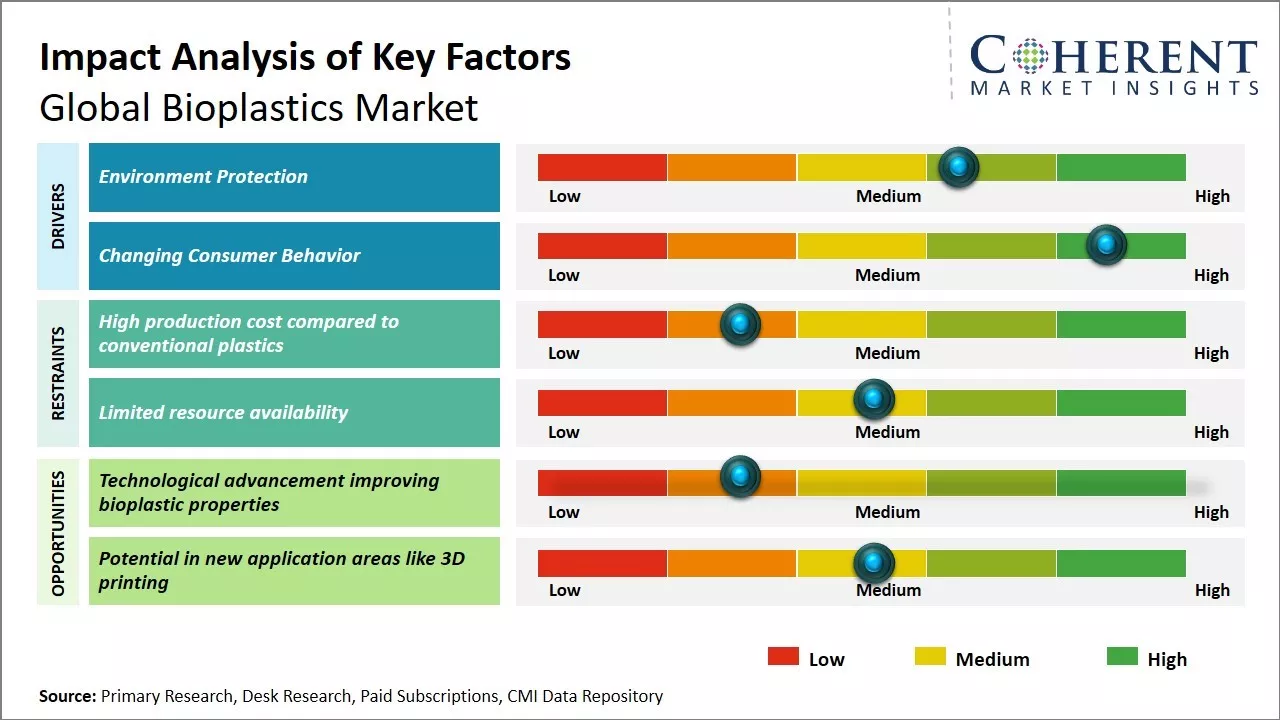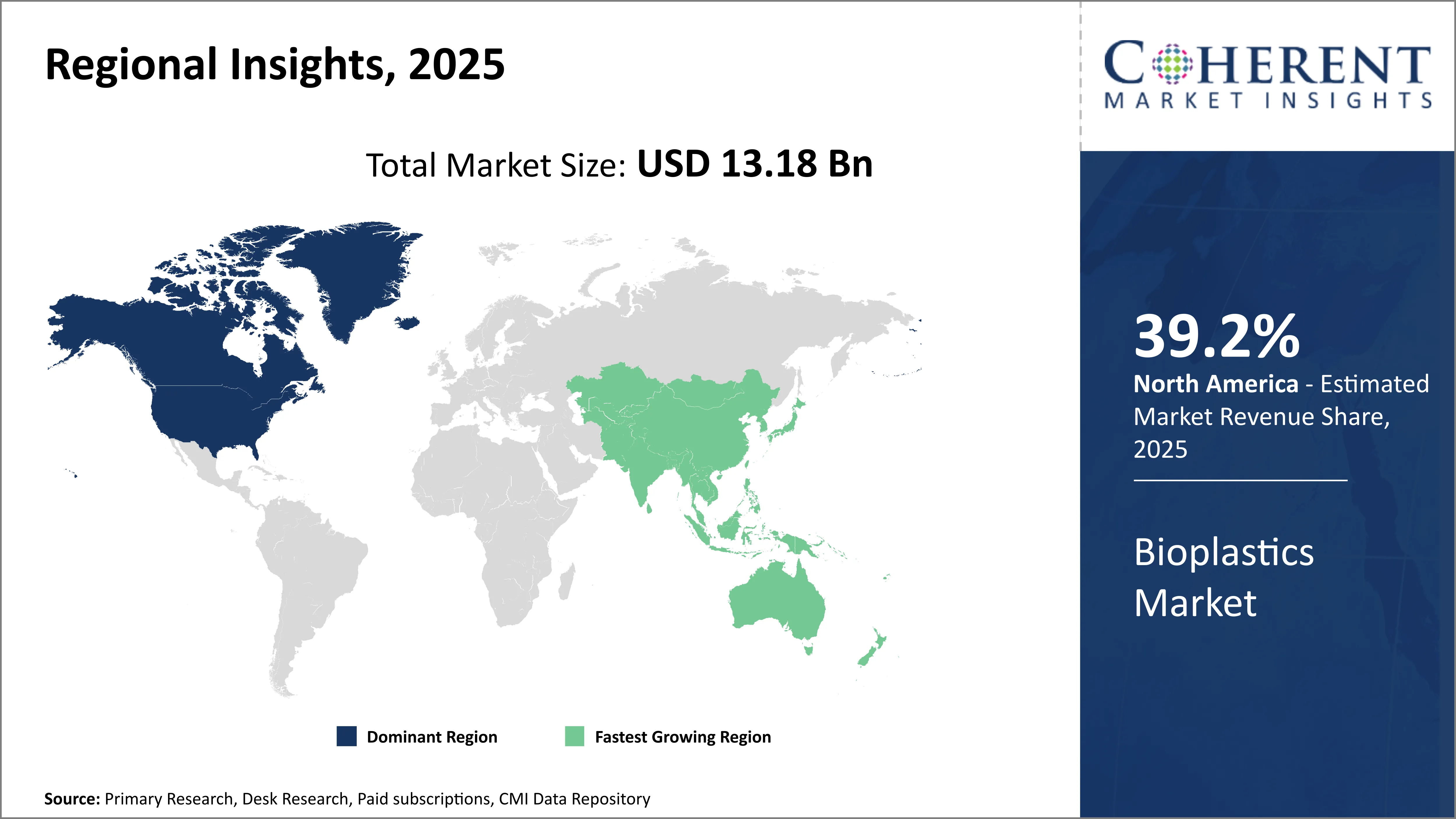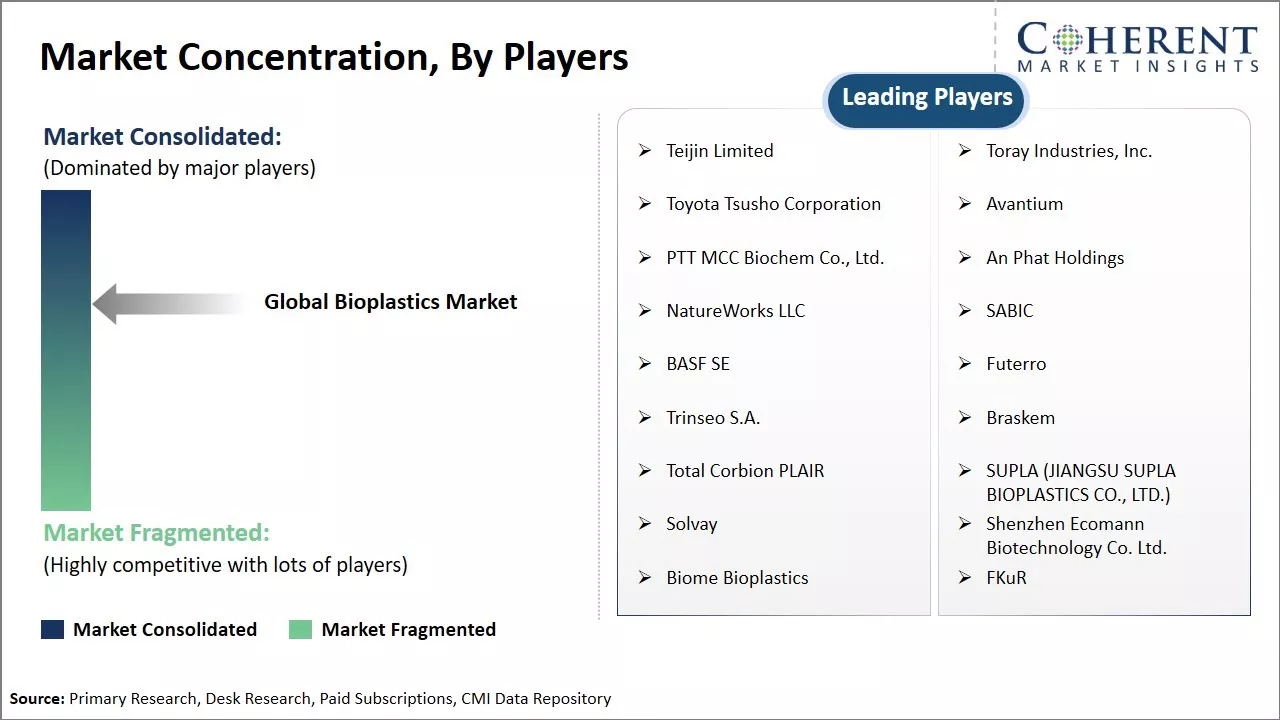The global bioplastics market will surpass USD 13.18 Bn in 2025 and is likely to reach USD 48.66 Bn by 2032. The global market is exhibiting a compound annual growth rate (CAGR) of 20.5% from 2025 to 2032.

To learn more about this report, Download Free Sample
The bioplastics market to witness growth, driven by growing demand from packaging industry. This is due to favorable government regulations on sustainable plastics. Bioplastics offer a sustainable alternative to conventional plastics made from petroleum. Environmental concerns among consumers have increased the demand for sustainable and biodegradable plastics.
|
Current Event |
Description and its Impact |
|
Global Regulatory Push for Plastic Waste Reduction |
|
|
Technological Breakthroughs in Bio-Based Manufacturing |
|
Uncover macros and micros vetted on 75+ parameters: Get instant access to report
The biodegradable segment will hold 57.1% share in the global bioplastics market in 2025. Biodegradable plastics can decompose completely. It will break down into carbon dioxide, water, and biomass. Advancements in biodegradable plastic technologies have increased their competitiveness against fossil-fuel based options.
For instance, Green Dot Bioplastics expanded its Terratek® BD line. The expansion included nine new compostable grades. These grades were targeted for
The packaging segment is likely to hold 36% share in the global bioplastics market in 2025. Bioplastics are used across various packaging formats. It includes food and beverage containers to shopping and garbage bags. Strict regulations to curb single-use plastics have created opportunities for bioplastics in packaging.
For instance, in September 2025, Advanced Materials Inc announced the launch of its latest line of sustainable bioplastics. The bioplastics were designed for packaging applications.

To learn more about this report, Download Free Sample
North America has established itself as the dominant region with 39.2% share in 2025. North America is a hub of manufacturers such as NatureWorks, BASF, Corbion, and Bioamber. These manufacturers are investing in R&D to launch new bioplastic grades.
For instance, in November 2023, AgroRenew LLC announced its plan to build an $83 million bioplastics plant. The 200,000 sq. ft. facility was used to convert food waste from cantaloupe, watermelon, and pumpkin farms in the U.S. into bioplastics.
Asia Pacific has emerged as the fastest‑growing market for bioplastics. Countries like China, India, Indonesia and Thailand offer huge markets. These nations have large populations and rapid economic growth. They view bioplastics as a chance to meet sustainability goals. They also use them to serve many industries.
For instance, an Odisha-based startup has been addressing environmental and food waste challenge. The startup will convert seafood waste into bioplastics.
The U.S. is likely to hold a dominating position in the global bioplastics market in 2025. This is owing to strong government support and growing demand for sustainable materials. Increasing consumer awareness and strict environmental regulations also drive market growth.
For instance, Symphony Environmental Technologies announced a two-year exclusive US supply contract for their d2w biodegradable plastics technology. The contract covered nutritional supplement bottles. They also launched a new bottle in the US with Better Earth LLC (“Better Earth”) using d2w for nutritional supplements.
China is likely to hold a dominating position in the global bioplastics market. This is owing to rapid industrial growth and rising demand for eco-friendly products. China’s large manufacturing base supports mass production of bioplastics at lower costs. Growing investments in green technologies boost innovation and market expansion. Supportive policies and environmental goals encourage the use of bio-based materials.
For instance, in May 2023, Sulzer signed an agreement with Jindan New Biomaterials (Jindan) in China. Jindan is a major lactic acid (LA) producer. The deal aimed to enable the production of polylactic acid (PLA), a biobased plastic.

To learn more about this report, Download Free Sample
| Report Coverage | Details | ||
|---|---|---|---|
| Base Year: | 2024 | Market Size in 2025: | USD 13.18 Bn |
| Historical Data for: | 2020 To 2024 | Forecast Period: | 2025 To 2032 |
| Forecast Period 2025 to 2032 CAGR: | 20.5% | 2032 Value Projection: | USD 48.66 Bn |
| Geographies covered: |
|
||
| Segments covered: |
|
||
| Companies covered: |
Teijin Limited, Toray Industries, Inc., Toyota Tsusho Corporation, Avantium, PTT MCC Biochem Co., Ltd., An Phat Holdings, NatureWorks LLC, SABIC, BASF SE, Futerro, Trinseo S.A., Braskem, Total Corbion PLAIR, SUPLA (JIANGSU SUPLA BIOPLASTICS CO., LTD.), Solvay, Shenzhen Ecomann Biotechnology Co. Ltd., Biome Bioplastics, and FKuR |
||
| Growth Drivers: |
|
||
| Restraints & Challenges: |
|
||
Uncover macros and micros vetted on 75+ parameters: Get instant access to report
Environmental protection is now a major global concern. Pollution, global warming, and climate change are rising. People want sustainable alternatives to conventional plastics. Traditional plastics come from fossil fuels. They take hundreds of years to break down. Bioplastics are a better option. They are biodegradable or made from renewable sources.
Changing consumer attitudes towards sustainable products has boosted the bioplastics industry. Millennials and Gen Z, care about a products environmental and social impact. They check the facts before buying. They are willing to pay more for plastic-free or recyclable products.
Technological progress is growing the global bioplastics market. Bioplastics come from renewable sources like vegetable oils and fats. They are a greener option than regular plastics. Traditional bioplastics have been expensive and limited in use. Ongoing research is making them cheaper and better.
Share
Share
About Author
Yash Doshi is a Senior Management Consultant. He has 12+ years of experience in conducting research and handling consulting projects across verticals in APAC, EMEA, and the Americas.
He brings strong acumen in helping chemical companies navigate complex challenges and identify growth opportunities. He has deep expertise across the chemicals value chain, including commodity, specialty and fine chemicals, plastics and polymers, and petrochemicals. Yash is a sought-after speaker at industry conferences and contributes to various publications on topics related commodity, specialty and fine chemicals, plastics and polymers, and petrochemicals.
Missing comfort of reading report in your local language? Find your preferred language :
Transform your Strategy with Exclusive Trending Reports :
Frequently Asked Questions
Joining thousands of companies around the world committed to making the Excellent Business Solutions.
View All Our Clients